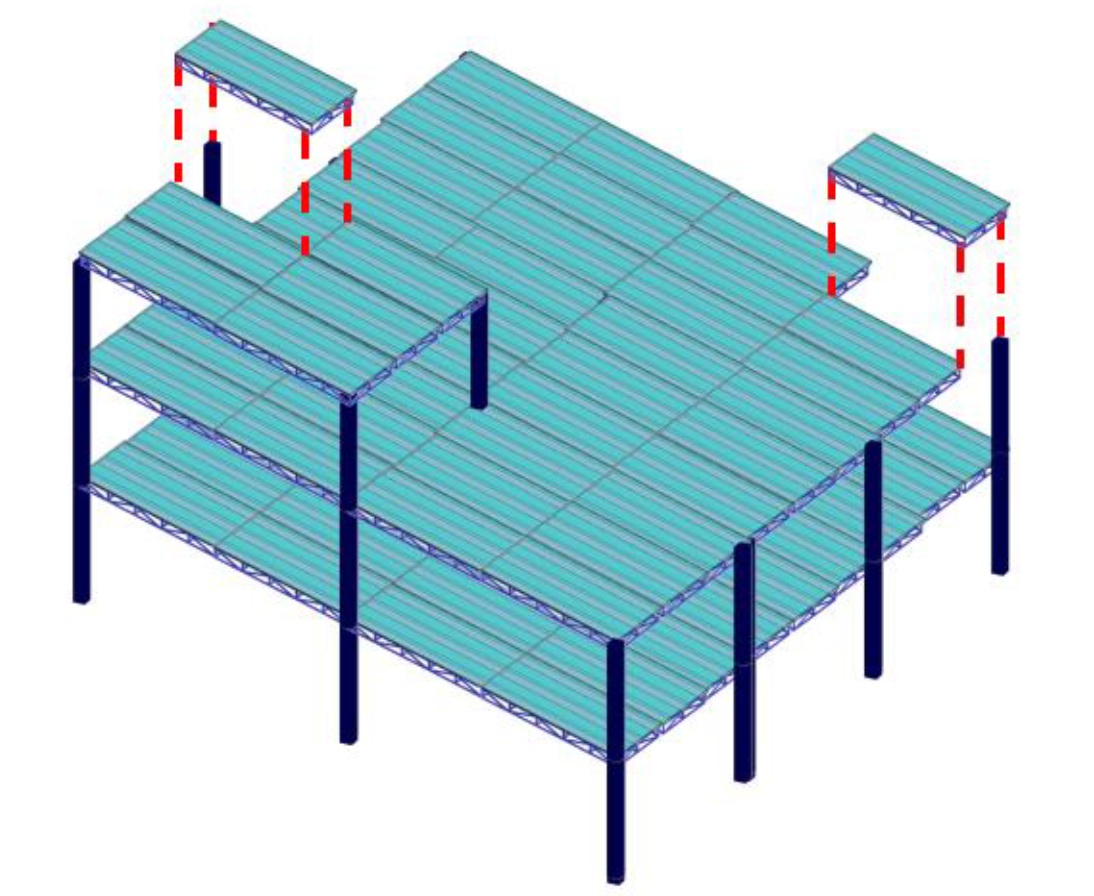2015
Dr. Tony Yang
Department of Civil Engineering, University of British Columbia
Development of Innovative and Economical Steel Floor System
This project aims to develop an innovative and economical modular steel floor system that can be used for steel high rise buildings. The proposed system is composed of modular steel floor unit (space truss) that houses MEP service components (which can be pre-installed in a factory setting) and topped with a precast concrete slab on steel deck.
Project involves the following phases:
*Prototype Design – in consultation with code, MEP, and structural consultants to establish the minimum floor thickness.
*Finite element modelling and optimization – to evaluate the performance of the modular system under gravity and seismic loading.
*Constructability and serviceability study- in consultation with local steel fabricators
*Experimental validation – to evaluate the behaviour under gravity and seismic loads.
*Performance-based evaluation
*Develop design guidelines
By constructing the floor as modular units, it will lower the unit construction cost, site construction cost and construction time. This floor system will lead to more robust, high-performance and economical steel high-rise buildings being developed worldwide.
BIOGRAPHY
Dr. Tony Yang received his B.Sc. (2001) and M.Sc. (2002) from the University at Buffalo, New York, and his Ph.D. from the University of California, Berkeley in 2006. His research focus on improving the structural performance through advanced analytical simulation and experimental testing. He has developed the next-generation performance-based design guidelines (adopted by the Applied Technology Council, the ATC-58 research team) in the United States; developed advanced experimental testing technologies, such as hybrid simulation and nonlinear control of shake table, to evaluate structural response under extreme loading conditions; developed risk-based simulation models for countries in the North and South America and the Global Earthquake Model (GEM) for the counties in the South East Asia. Dr. Yang has been actively involved in using novel technologies, such as base isolation systems and dampers, to improve structural performance. He has working with leading structural engineering firms to peer-reviewed landmark buildings, including the tallest steel plate shear wall structure in the world. Dr. Yang is an active member of the Tall Buildings Initiative Project, funded by the Pacific Earthquake Engineering Research Center, to develop seismic design guidelines for tall buildings. Dr. Yang co-developed ‘OpenSees Navigator’, a software program widely used by design engineers and researchers to design and analyze complex structural systems. He has also developed ‘PBEE’, a software program to quantify facility loss under extreme events.


